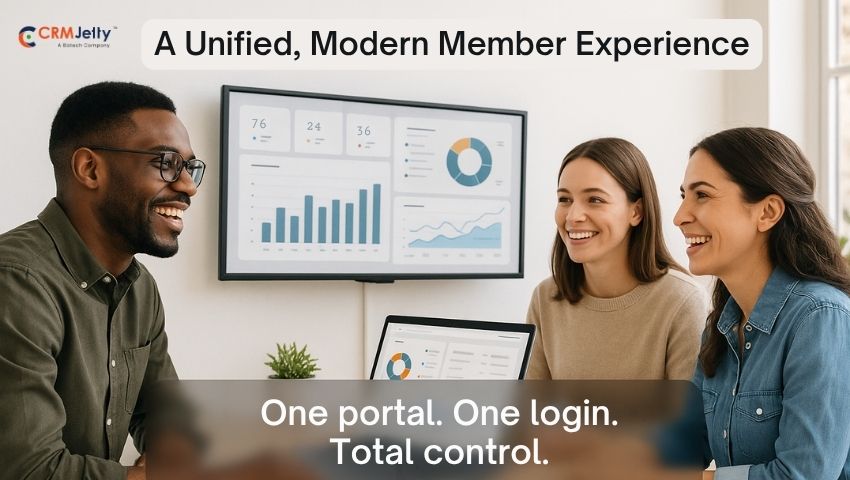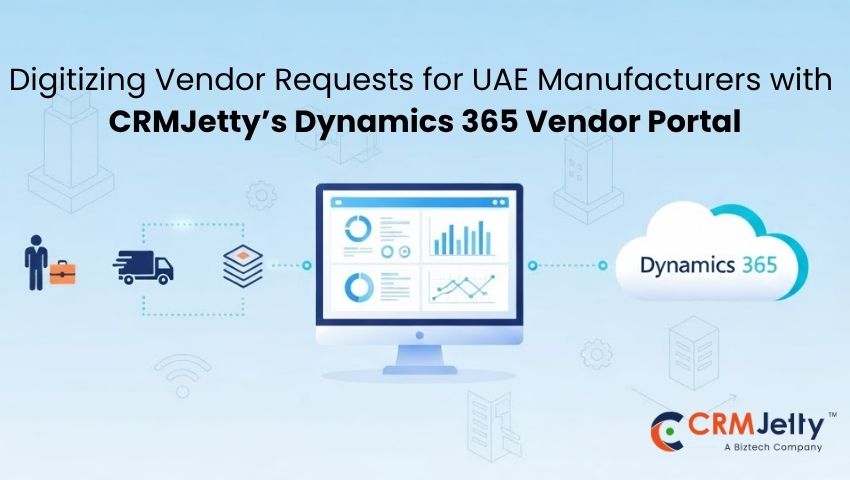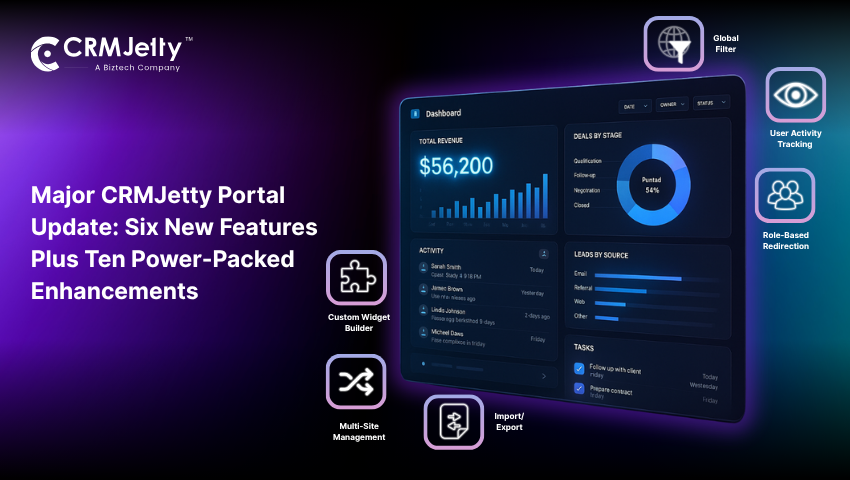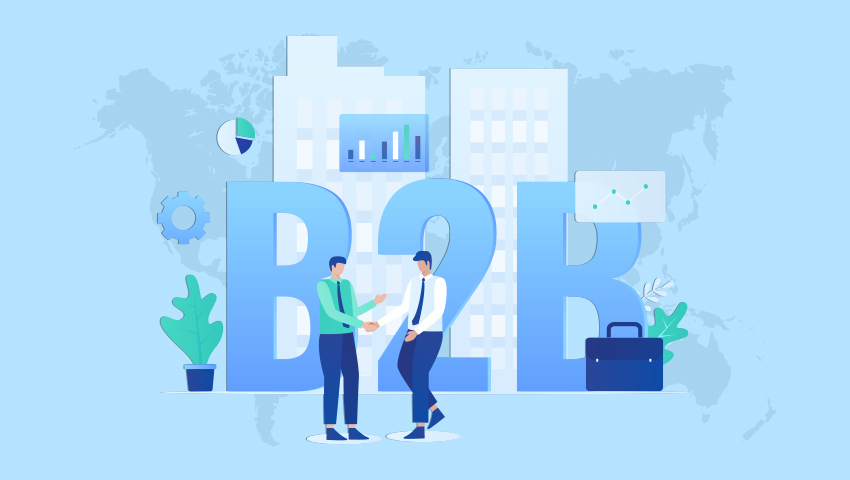Most associations and NGOs treat Salesforce like their digital brain, storing every member interaction, donation, and event RSVP in its vast neural network. Here’s the kicker, though: Salesforce, for all its brilliance, often operates like a genius that prefers to work solo — great internally, but hard to extend outward to members and partners.
Sure, it’s fantastic at managing internal operations, but asking members to navigate it directly is like handing them the keys to a spaceship and expecting them to fly to the moon. The licensing costs alone can make direct external access prohibitively expensive — especially when scaled across your thousands of members or partners.
While an integrated portal solution can dramatically reduce this licensing burden by handling many interactions through the portal interface rather than requiring full CRM licenses for each user, you’ll still need your core Salesforce infrastructure and some level of external user licensing or API usage.
The key benefit is cost reduction, not elimination — but for most associations, that reduction is significant enough to make external access finally feasible.
Without a unified portal, members often have to use multiple platforms, increasing the risk of data silos and duplicate records. A unified portal for associations changes this entire circus act by creating a member self-service portal that Salesforce can actually communicate with without experiencing a meltdown.
This unified Salesforce portal for associations serves as a friendly translator between your backend powerhouse and your members, who just want to update their contact information without a computer science degree.
The result is an association membership portal that keeps Salesforce as your single source of truth, while providing members with an experience that won’t make them question their life choices.
Challenges Associations Face with Salesforce Alone
While Salesforce is a powerful CRM for internal operations, associations quickly discover that managing thousands of external members with it alone presents significant challenges.
-
High Licensing Costs for External Users
Salesforce licenses cost more per head than feeding a small army of consultants caviar for breakfast. The platform assumes you’re buying for maybe 50 internal staff members, not 5,000 external members who just want to check their renewal dates.
Associations often face a lose-lose decision — either overspend on licenses or restrict member access, both of which hurt engagement.
But here’s what executives often ask: “What’s the actual ROI comparison between buying thousands of Salesforce licenses versus implementing a unified portal?” Associations typically save 70–85% on licensing costs by using a portal solution. It requires only a few Salesforce API connections, rather than individual user licenses.
That’s money you can redirect toward member programs that actually generate engagement rather than disappearing into software licensing black holes.
Tired of watching your budget disappear into Salesforce licensing fees while members still can’t access their own data? There’s a more cost-effective way to provide member self-service without breaking the bank.
-
No Direct Self-Service for Members
Salesforce gives members about as much self-service capability as a vending machine with no buttons. Members can’t renew their memberships, register for events, or update their email addresses without calling your staff, as if it were 1995.
Your team spends their days doing data entry that could be automated, forcing skilled staff to spend valuable hours on repetitive manual tasks instead of strategic initiatives.
-
Fragmented Member Experience
Without an association membership portal, your members navigate through more platforms than a video game character jumping between levels. They juggle multiple platforms — emails for events, PDFs for invoices, and separate systems for renewals — leading to fragmented, frustrating experiences.
This scattered approach makes member engagement as effective as herding cats in a thunderstorm, and your revenue suffers from missed renewals and empty seats at events.
Leadership teams frequently wonder: “How much are we actually losing in member retention due to this fragmented experience?” Studies show associations with disconnected systems, see 15-20% higher member churn rates compared to those with unified portals. When members can’t easily access benefits they’re paying for, they question the value proposition faster than you can say “non-renewal.”
A unified experience doesn’t just reduce frustration; it directly impacts your bottom line by keeping members engaged and reducing the costly cycle of constantly recruiting replacements for those who ghost you.

-
Data Inconsistency & Manual Workload
Every time a member emails their updated information, your staff manually enters it into Salesforce like medieval scribes copying manuscripts. One typo turns “Johnson” into “Johnsen,” and suddenly you’ve created a duplicate member who exists only in your database’s fever dreams.
The hours wasted on manual data entry could be spent on actual strategic work, but instead, your team plays an endless game of catch-up with a system that refuses to communicate directly with its members.
-
Limited Personalization
Salesforce treats all your external users like they’re wearing the same uniform, serving identical dashboards to members, vendors, and partners alike. Your board members get the same generic view as first-year members, resulting in generic experiences that fail to meet the specific needs of each stakeholder group.
Without a unified member portal that recognizes different roles, you’re essentially hosting a masquerade ball where everyone’s wearing the same mask and nobody knows who needs what.
The Unified Portal Solution for Salesforce Associations
Enter the unified member portal — a seamless extension of Salesforce that transforms how associations engage, serve, and scale without the usual cost or complexity.
-
Cost-Effective External Access
A well-implemented portal enables thousands of external users to access portions of your CRM data through the portal interface, thereby reducing the need for full CRM user licenses for each member. Your members, vendors, and partners get real-time information through the portal while Salesforce thinks it’s only talking to one user, like a brilliant magic trick that actually saves money.
The bean counters finally stop crying into their spreadsheets, and you can redirect those saved licensing fees toward things that actually matter —redirecting those savings toward member programs that deliver value.
-
Seamless Member Self-Service
The Salesforce integration for the member self-service portal empowers your members to take control of their own affairs —a revolutionary concept, indeed. They renew memberships at 2 AM in their pajamas, register for events while pretending to work, and update their profiles without calling your office seventeen times.
Your staff stops playing the role of telephone operator and starts doing actual strategic work, while members experience true convenience and autonomy for the first time.
Board members often press: “How quickly can we realistically implement this without disrupting current operations?” The beautiful truth is that modern portal solutions can be deployed in 8-12 weeks, not the 18-month death marches of traditional enterprise software.
You can roll out basic self-service features first, then add modules incrementally without your members even noticing the construction work happening behind the scenes.
It’s like renovating your house one room at a time while still living in it, except this actually works and doesn’t leave you covered in drywall dust.
-
Unified Digital Experience
This Salesforce portal for associations brings together memberships, events, announcements, and support cases into a single, branded home that doesn’t resemble a design from the 1990s.
Members stop playing digital hide-and-seek across multiple platforms and actually find what they need without needing a treasure map.

The professional interface makes your association appear to belong in this century, not stuck in the dial-up era, when loading a webpage felt like a spiritual journey.
-
Real-Time Data Synchronization
The portal connects to Salesforce via APIs, automating much of the data flow so that updates in the portal and CRM are reflected with minimal manual entry and very short delay.
Your database stays cleaner than a germaphobe’s kitchen counter, with no duplicate entries creating parallel universes where the same member exists in three different dimensions.
-
Role-Based Personalization
The best portal for associations using Salesforce understands that vendors don’t care about yoga class schedules and that members don’t need invoice approval workflows. The best portal for associations using Salesforce understands that vendors don’t care about yoga class schedules and that members don’t need invoice approval workflows.
Each user role gets directed to their own tailored dashboard view, showing only the content and features relevant to their needs—no information overload, no irrelevant widgets.
Members track renewals and events, vendors manage contracts, and partners access shared resources, all without seeing each other’s business or starting turf wars over who gets the better dashboard widgets.
Members track renewals and events, vendors manage contracts, and partners access shared resources, all without seeing each other’s business or starting turf wars over who gets the better dashboard widgets.
Industry-Specific Use Cases
Every sector faces unique challenges — from professional associations to government agencies and NGOs. Each can unlock powerful efficiencies with a unified Salesforce portal tailored to their specific needs.
-
Professional Associations
Professional associations currently run their member services like a 1980s call center, where every renewal request feels like a tedious, manual process that drains staff time. A unified Salesforce portal for associations transforms this stone-age process by letting members handle renewals, event registrations, and resource access without having to beg staff for help.
The result is members who actually renew on time instead of letting their certifications expire like milk in the back of the fridge. At the same time, your staff reclaims their sanity and stops fantasizing about throwing their phones into the ocean.
-
Government & Semi-Government Agencies
Citizens applying for permits currently experience the joy of waiting in line longer than it takes to grow a beard, only to be told they’re missing form 47-B subsection 3. An association membership portal connected to Salesforce lets citizens submit applications, upload documents, and track status online, turning bureaucratic nightmares into merely unpleasant dreams.
Processing times drop from geological epochs to actual business days, and citizens stop writing angry letters that could strip paint off walls.
Agency heads consistently ask: “Can we customize the portal for our specific regulatory requirements without starting from scratch?” Absolutely – the best portals come with configurable workflows that adapt to your byzantine approval processes without requiring you to rebuild Rome.
Whether you need three-tier approvals, conditional logic based on permit types, or integration with existing government databases, the portal adapts to your requirements like water finding its level.
The portal offers essential compliance features, including audit logging, role-based permissions, and secure access controls. You’ll still need to configure the workflows to match your specific jurisdiction. This way, citizens finally receive services that don’t prompt them to consider moving to another jurisdiction.
-
Federations & Umbrella Organizations
Regional branches currently report data with the consistency of a chocolate teapot, using everything from carrier pigeons to interpretive dance to communicate with headquarters. A unified portal for associations creates standardized dashboards for each branch while keeping their data separate, much like giving everyone their own sandbox without letting them interfere with one another.
Collaboration improves from “barely functional chaos” to “organized chaos,” which counts as a massive win in the federation world.
-
NGOs & Non-Profits
NGOs juggle donors, volunteers, and beneficiaries across numerous disconnected systems, resulting in a data flow that resembles spaghetti thrown against a wall during an earthquake. The member self-service portal Salesforce integration provides donors with their donation history, allows volunteers to sign up without receiving seventeen emails, and gives beneficiaries actual access to resources instead of promises written in disappearing ink.
Trust levels rise faster than bread dough in a warm kitchen, and resource distribution becomes efficient enough that even the auditors crack a smile.
-
Licensing & Membership Bodies
Licensing bodies currently track compliance like detective work in a noir film, complete with paper trails, mysterious document disappearances, and enough manual processing to make a robot weep.
A unified member portal lets members renew licenses and upload compliance documents directly, with everything flowing into Salesforce faster than water-cooler rumors.
Compliance delays vanish like donuts in a break room, and licenses actually get renewed before they expire, shocking everyone involved, including the members themselves.
Key Benefits of a Salesforce-Integrated Unified Portal
Integrating a unified portal with Salesforce doesn’t just streamline operations — it transforms how associations connect, operate, and deliver value across every member interaction.
-
One Access Point:
Everyone gets one door to walk through instead of playing musical chairs with fifteen different login screens. Your unified Salesforce portal for associations becomes the single, secure access point for every stakeholder — simplifying interactions and eliminating login fatigue.
-
Real-Time Data:
Data updates happen instantly, ensuring accuracy without manual intervention or complex processes. When someone changes their email address in the portal, Salesforce knows about it faster than office gossip spreads about who ate the last donut.
-
Secure Role-Based Access:
Members see member content, vendors see vendor content, and nobody accidentally accesses sensitive data they shouldn’t. Each group receives its own personalized dashboard, featuring relevant insights and actions tailored to their specific role.
Stakeholders rightfully question: “How do we ensure data security and compliance with regulations like GDPR or CCPA?” Modern unified portals come with enterprise-grade security built in, like chocolate chips in cookie dough – it’s not an afterthought, but a fundamental ingredient.
You get SSL encryption, multi-factor authentication, audit trails that would make forensic accountants weep with joy, and granular permissions that control access down to individual field levels.
The portal inherits Salesforce’s security infrastructure while adding its own layers, creating a fortress that satisfies even the most paranoid compliance officers without making legitimate users feel like they’re breaking into Fort Knox.
-
Operational Efficiency:
Your staff can finally focus on higher-value tasks instead of repetitive administrative work. The unified member portal handles the mind-numbing repetitive tasks, freeing your team to tackle problems more complex than “copy this from email to Salesforce for the 500th time today.”
How much more could your team accomplish if they weren’t drowning in manual data entry? See how associations are reclaiming thousands of staff hours annually.
-
Cost Savings:
Reduce dependency on costly Salesforce licenses by routing access through the unified portal. One portal connection costs less than licensing every member, vendor, and their cousin’s neighbor’s dog who might need access once a year.
-
Faster Service Delivery:
Members get instant gratification without waiting for business hours, time zones, or Mercury to exit retrograde. The Salesforce integration for the member self-service portal operates 24/7, unlike humans, who require things like sleep and weekends.
-
Scalable & Customizable:
Start small and grow the portal like a carefully cultivated garden, not a wildfire that consumes everything in its path. New modules plug in when needed, making this the best portal for associations using Salesforce that won’t require a complete rebuild every time someone has a new idea.
Before investing, executives invariably wonder: “What happens if our chosen vendor disappears or we need to switch providers down the road?” This is where choosing a portal with open standards and API-first architecture pays dividends.
Your data remains in Salesforce, not trapped in a proprietary vendor environment that’s difficult to migrate from.
The best solutions provide data portability guarantees and use standard integration patterns, meaning you’re not married to the vendor until death do you part. You maintain control while the vendor handles the heavy lifting, creating a partnership rather than a hostage situation.
Why CRMJetty Portal Stands Out for Associations?
CRMJetty’s unified portal for associations connects to Salesforce like they’re childhood friends who finish each other’s sentences, not awkward strangers forced to share an elevator. The native integration means real-time data flows smoother than a con artist’s sales pitch, without the hiccups and errors that make your IT team consider a career change to goat farming.
The no-code/low-code setup enables you to configure this association membership portal more quickly than explaining to your board why the last system failed spectacularly. You don’t need a developer army or a degree in rocket science to customize it —just point, click, and watch it work the way it’s meant to, not fight you every step of the way.
The modular design means you start with what you need today, not what some salesperson convinced you might be helpful in 2087. Built specifically for associations, NGOs, and government bodies, it understands your world better than generic platforms that treat associations as if they were selling widgets instead of managing complex member relationships.
This isn’t another Frankenstein solution cobbled together from spare parts; it’s purpose-built to handle the beautiful chaos that associations call normal operations.
Closing Lines
Salesforce remains the heavyweight champion of internal CRM operations, but extending it directly to external users without the right interface leads to frustration, inefficiency, and rising costs.
Data silos grow rapidly, making it harder to maintain consistency and efficiency. CRMJetty’s unified Salesforce portal for associations resolves this issue by creating a seamless bridge between your powerful backend and the users who simply want to pay their dues, eliminating unnecessary complexity and frustration.
This member self-service portal Salesforce solution stops the bleeding of licensing costs, ends the eternal game of phone tag, and gives everyone the personalized experience they deserve without breaking the bank or your sanity.
Your association finally operates like it belongs in this century, with real-time data sync, automated processes, and members who can actually find what they need without filing a missing persons report.
The choice is simple: continue playing digital whack-a-mole with scattered systems and angry members, or implement a unified portal for associations that makes everyone’s life easier.
Don’t let another day pass by while your team struggles with disconnected systems and members grow increasingly frustrated. Take the first step toward a unified, efficient future that works for everyone.
All product and company names are trademarks™, registered® or copyright© trademarks of their respective holders. Use of them does not imply any affiliation with or endorsement by them.







